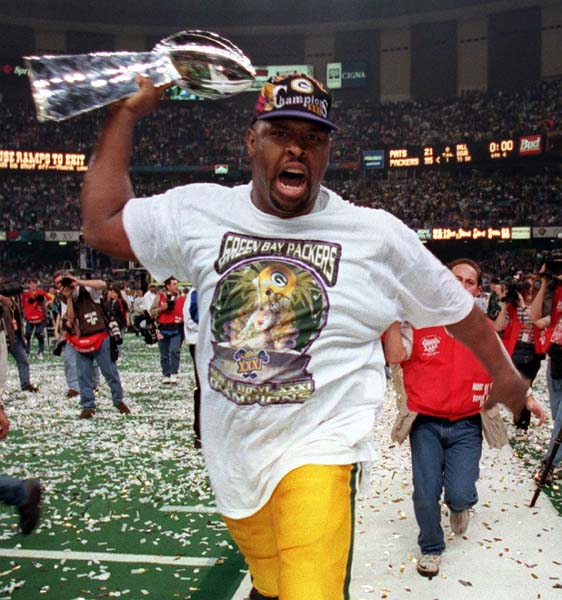Yesterday, the Milwaukee Brewers finally realized that pencils have erasers. After three-plus years of varying levels of failure, they finally cut ties with the sad-sack Jeff Suppan, costing the team over $10 million for the rest of the season.
To summarize: the team is paying $10 million dollars to Suppan in order for him to do absolutely nothing. And the fans are thrilled about it. So, yes, Soup: you have gotten that bad that paying you $10 million to do nothing is preferable to paying you $12 million to pitch. Not a good sign. It's mildly ironic that such an abortion of a contract would be terminated with 4 months still left on it.
The thing is, Suppan was never that good. When we signed him, the general consensus from Brewer Nation was "This is our big-name savior?" At the time, he was 32 years old and coming off of a successful, but not dominating, stint in St. Louis. It was Suppan's masterful performance in the 2006 NLCS, winning both of his starts, that catapulted him to the forefront of a pretty weak free agent class. Under the new ownership of Mark Attanasio, the team looked both to beef up payroll and show that they were serious about winning. So, inexplicably, they signed Suppan--a journeyman back-end starter who had just so happened to crank it up for two weeks. I instantly granted him provisional access to the Michael Redd All-Stars, for franchise-crushingly bad contracts, pending his suckitude. Now that all is said and done, nobody would argue against his inclusion.
Let's analyze Suppan using a little tool I like to call the Bad Free Agent Signing Checklist. If your favorite team signs a player, just hold him up against the list to see if you should be smiling or queasy.
-The player played out of his shoes on a high-pressure level, which has artificially inflated his value. Check. The difference between $5.5 million a year and $12 million a year for Suppan was his 2006 NLCS MVP award. This is seen far more often in the NBA (Hedo Turkoglu being the best recent example), but the rest of the major sports aren't immune to it.
-The player is just short of his prime and looks ready to make The Leap, but he demands to be paid like he has already made it OR The player is at the tail end of his prime, will most certainly be a shell of his former self by the end of the contract, yet demands to be paid like he will maintain his current level of production forever. Check. Suppan clearly fits the second criteria. How anyone could've thought that he would still be worth eight figures a year at age 35 when the track record of mid-30s pitchers argues against it is beyond me.
-Somehow, the player is in a favorable market that allows him to maximize the cash he can squeeze out of potential suitors. Check. Clearly, the Brewers weren't going to get Dice-K that off-season. So the best remaining options included Suppan, Ted Lilly, Jason Marquis, Gil Meche, Randy Wolf, or Barry Zito. After Zito (who you have to remember was coming off of a MONSTER run with the A's before spontaneously combusting in San Fran), we're talking about a massive drop-off. So the likes of Suppan, Lilly, and Meche were able to turn a weak market into overlarge contracts.
(Note: This phenomenon usually occurs in one of three ways. Either an above average player capitalizes a shallow FA pool like noted above, an above average player capitalizes on a successful run with a successful team to squeeze franchise status and money out of an also-ran (also applicable in the Suppan example), or the converse of the second option: a player establishes himself as the only legitimate player on a shitty team, and leverages that into superstar money (Michael Redd is a painful local example though, on a national scale, Andre Iguodala might be objectively a little bit worse.)
-The team is desperate to be seen doing anything to build a contender. Check. When the past two criteria combine, you KNOW you are in trouble. And in this case, the new owner wanted to distance himself from the old owner, who had spent the better part of 15 years refusing to spend money on ballplayers. The result? The team took one look at the above list of pitchers, said "We don't really like any of them too much but we need to do something, and settled on Suppan. "We know it's a bad decision long-term, but we need something to look good short-term," has never been the justification of a successful investment.
-The player is injury-prone enough to scare the shit out of your team committing so much cash to him--and, in the event that he blows his knee out in 82 places, you would not be shocked. Doesn't apply here--the one positive thing that can still be said about Suppan is that he's durable.
But hey--we signed him for the playoffs! He's an October hero! When this team gets over the top, you all are gonna be damn glad we overpaid for him!
Wait, here's Suppan's line from his start against the Phillies:
3 IP 6H 5R 5ER 2BB 3K 1WP and a series-clinching L
Thanks for the memories, Jeff. Now please give us some of our money back.
(Side note: feel free to measure up players of your choice against the Bad Free Agent Signing Checklist in the Comments section. I'm interested to see how well this thing holds up.)
Subscribe to:
Post Comments (Atom)



No comments:
Post a Comment